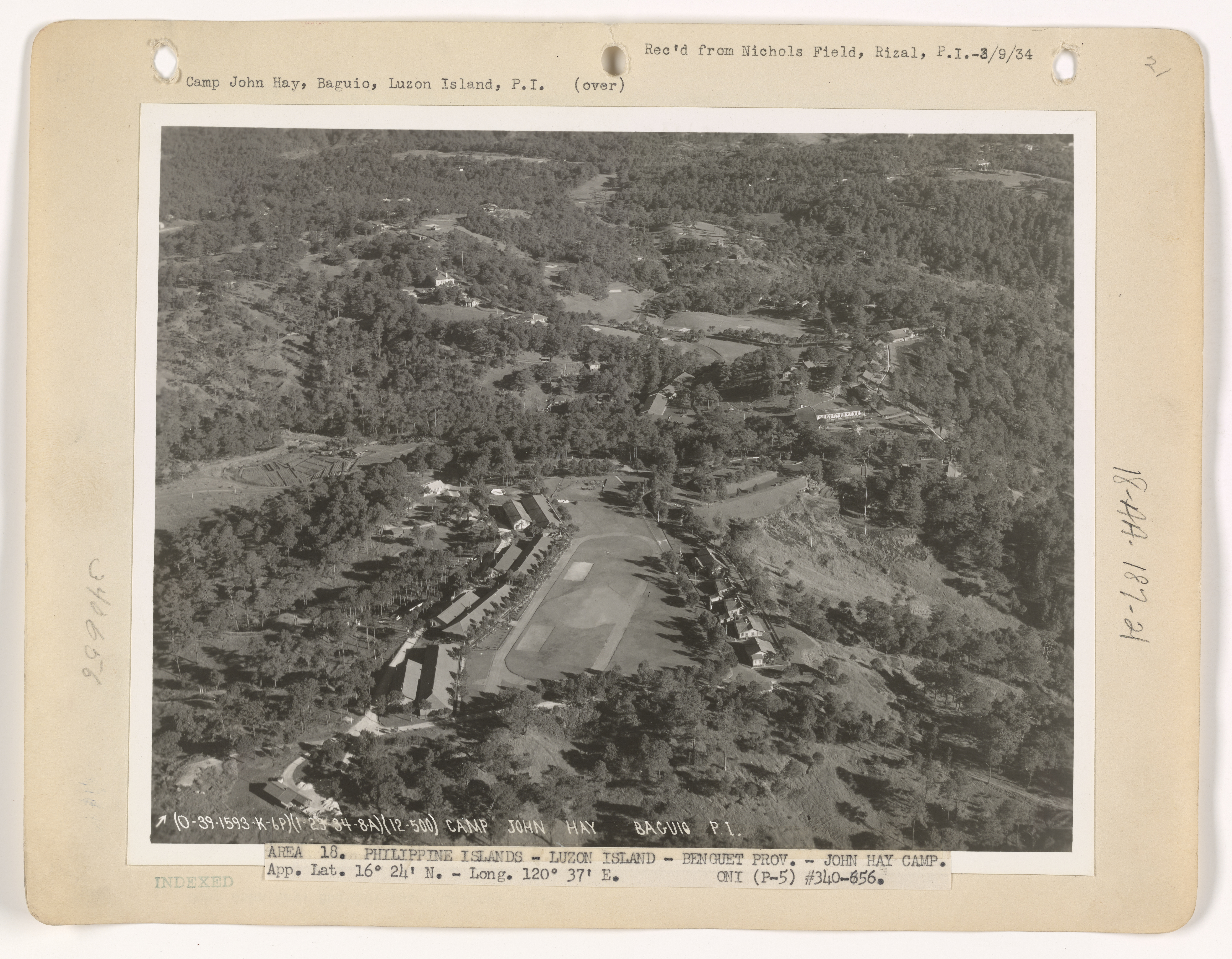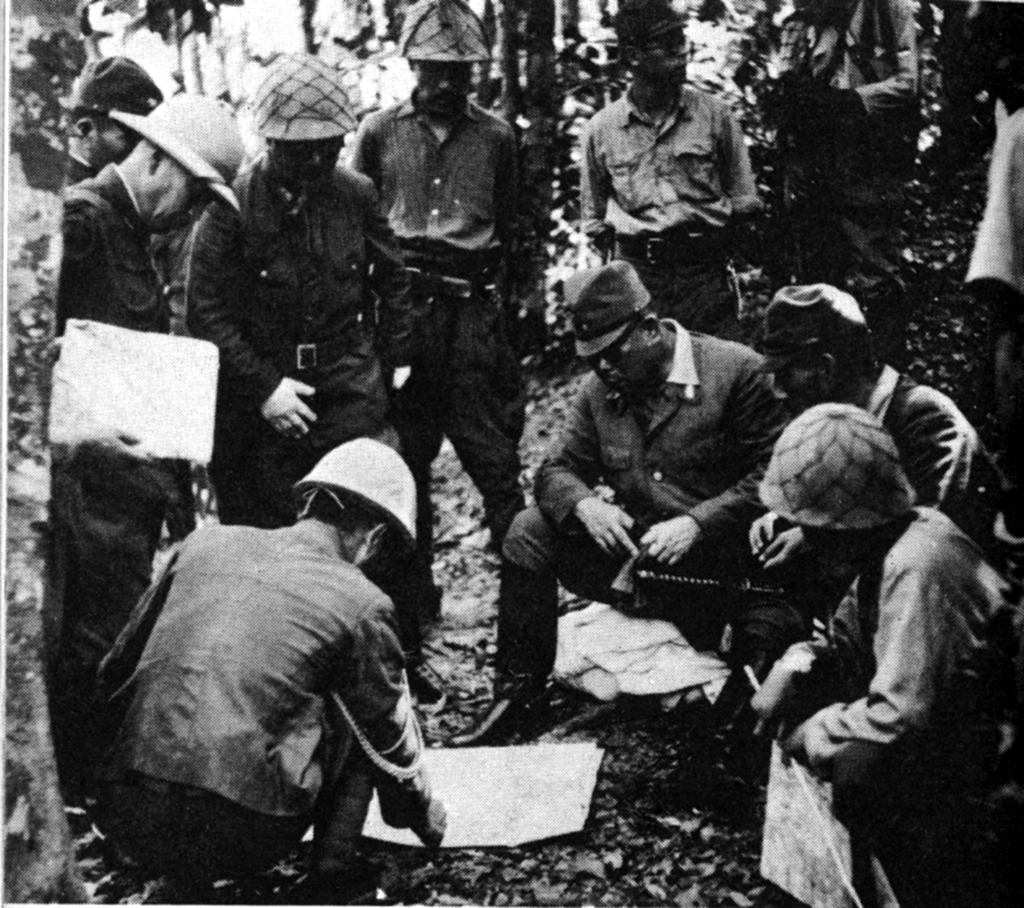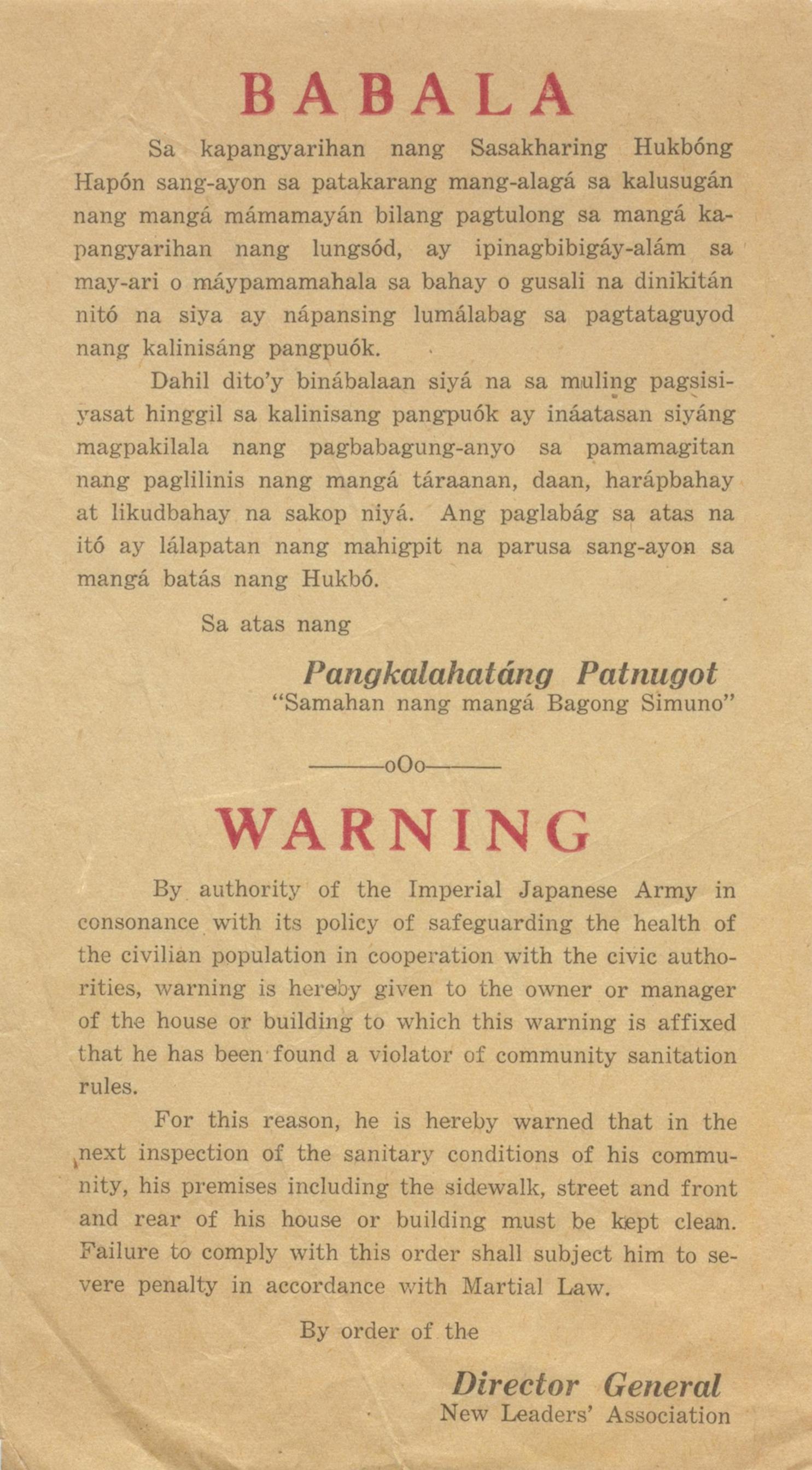|
Camp John Hay
Camp John Hay is a mixed-used development which serves as a tourist destination and forest watershed reservation in Baguio, Philippines which was formerly a military base of the United States Armed Forces. History The United States 48th Infantry Unit under Captain Robert Rudd established Hill Station in the current site of Camp John Hay in 1900 during the Philippine-American war. The site is referred to the locals, the Ibalois, as "Kafagway" and is owned by Ibaloi leader Mateo Cariño. of the land was then designated as "Camp John Hay", a military reservation for American soldiers, in October 1903 when US President Theodore Roosevelt signed a presidential order. American military personnel were given a place to refuge from the relative hotter temperature of the lowlands. In December 1941, Japanese warplanes dropped 72 bombs over the main gate of the camp during the onset of World War II in the Philippines. Camp John Hay served as an internment camp of the Imperial Japanese ... [...More Info...] [...Related Items...] OR: [Wikipedia] [Google] [Baidu] |
Baguio
Baguio ( , ), officially the City of Baguio ( ilo, Siudad ti Baguio; fil, Lungsod ng Baguio), is a 1st class highly urbanized city in the Cordillera Administrative Region, Philippines. It is known as the "Summer Capital of the Philippines", owing to its cool climate since the city is located approximately above mean sea level, often cited as in the Luzon tropical pine forests ecoregion, which also makes it conducive for the growth of mossy plants, orchids and pine trees, to which it attributes its other moniker as the "City of Pines". Baguio was established as a hill station by the United States in 1900 at the site of an Ibaloi village known as ''Kafagway''. It was the United States' only hill station in Asia. Baguio is classified as a Highly-Urbanized City (HUC). It is geographically located within Benguet, serving as the provincial capital from 1901 to 1916, but has since been administered independently from the province following its conversion into a chartered cit ... [...More Info...] [...Related Items...] OR: [Wikipedia] [Google] [Baidu] |
Philippines
The Philippines (; fil, Pilipinas, links=no), officially the Republic of the Philippines ( fil, Republika ng Pilipinas, links=no), * bik, Republika kan Filipinas * ceb, Republika sa Pilipinas * cbk, República de Filipinas * hil, Republika sang Filipinas * ibg, Republika nat Filipinas * ilo, Republika ti Filipinas * ivv, Republika nu Filipinas * pam, Republika ning Filipinas * krj, Republika kang Pilipinas * mdh, Republika nu Pilipinas * mrw, Republika a Pilipinas * pag, Republika na Filipinas * xsb, Republika nin Pilipinas * sgd, Republika nan Pilipinas * tgl, Republika ng Pilipinas * tsg, Republika sin Pilipinas * war, Republika han Pilipinas * yka, Republika si Pilipinas In the recognized optional languages of the Philippines: * es, República de las Filipinas * ar, جمهورية الفلبين, Jumhūriyyat al-Filibbīn is an archipelagic country in Southeast Asia. It is situated in the western Pacific Ocean and consists of around 7,641 islands t ... [...More Info...] [...Related Items...] OR: [Wikipedia] [Google] [Baidu] |
United States Armed Forces
The United States Armed Forces are the military forces of the United States. The armed forces consists of six service branches: the Army, Marine Corps, Navy, Air Force, Space Force, and Coast Guard. The president of the United States is the commander-in-chief of the armed forces and forms military policy with the Department of Defense (DoD) and Department of Homeland Security (DHS), both federal executive departments, acting as the principal organs by which military policy is carried out. All six armed services are among the eight uniformed services of the United States. From their inception during the American Revolutionary War, the U.S. Armed Forces have played a decisive role in the history of the United States. They helped forge a sense of national unity and identity through victories in the First Barbary War and the Second Barbary War. They played a critical role in the American Civil War, keeping the Confederacy from seceding from the republic and preserving the uni ... [...More Info...] [...Related Items...] OR: [Wikipedia] [Google] [Baidu] |
Philippine Island - Luzon Island - NARA - 68156779
The Philippines (; fil, Pilipinas, links=no), officially the Republic of the Philippines ( fil, Republika ng Pilipinas, links=no), * bik, Republika kan Filipinas * ceb, Republika sa Pilipinas * cbk, República de Filipinas * hil, Republika sang Filipinas * ibg, Republika nat Filipinas * ilo, Republika ti Filipinas * ivv, Republika nu Filipinas * pam, Republika ning Filipinas * krj, Republika kang Pilipinas * mdh, Republika nu Pilipinas * mrw, Republika a Pilipinas * pag, Republika na Filipinas * xsb, Republika nin Pilipinas * sgd, Republika nan Pilipinas * tgl, Republika ng Pilipinas * tsg, Republika sin Pilipinas * war, Republika han Pilipinas * yka, Republika si Pilipinas In the recognized optional languages of the Philippines: * es, República de las Filipinas * ar, جمهورية الفلبين, Jumhūriyyat al-Filibbīn is an archipelagic country in Southeast Asia. It is situated in the western Pacific Ocean and consists of around 7,641 islands t ... [...More Info...] [...Related Items...] OR: [Wikipedia] [Google] [Baidu] |
Ibaloi People
The Ibaloi (also spelled Ibaloy; Ibaloi: ''ivadoy'', ) are an indigenous ethnic group found in Benguet Province of the northern Philippines. ''Ibaloi'' is derived from ''i-'', a prefix signifying "pertaining to" and ''badoy'' or house, together then meaning "people who live in houses". The Ibaloi are one of the indigenous peoples collectively known as Igorot (''igudut'', "hill-dwellers"), who live in the '' cordillera central'' of Luzón. Distribution The Ibaloi inhabit the southeastern part of Benguet Province. The area is rich in mineral resources like copper, gold, pyrite, and limestone. Plants and animals are also abundant in the forests and mountain areas, and there is an extensive water system that includes the Bued River, Agno River, and Amburayan River. Mount Pulag, the third highest mountain of the Philippines, is found in their territory and is a culturally important area as well, considered the place where spirits join their ancestors. The Ibaloi are distributed i ... [...More Info...] [...Related Items...] OR: [Wikipedia] [Google] [Baidu] |
Mateo Cariño
Mateo Cariño was an Ibaloi chieftain who owned the land that was to become Baguio. He led a successful revolt against the Spanish garrison in La Trinidad and was proclaimed the ''Capitan Municipal'' of Baguio by President Emilio Aguinaldo. Background He owned vast tracts of land which covered the area which would later be known as Baguio as early as the Spanish colonial period. Titles over the land were given to him by the Spanish colonial government in exchange for his conversion to Christianity. His surname was adopted after his conversion. The land was a ''rancheria'' known as ''Kafagway'' and was the residence of the Cariño clan and the rest of the Ibaloi community. In 1901, Cariño was selected as representative of Baguio to chief executive of the US Insular Government over the Philippines. Cariño reportedly gave Emilio Aguinaldo, President of the Revolutionary Government of the Philippines who was fleeing to Hong Kong, refuge. This is said to have cause the American ... [...More Info...] [...Related Items...] OR: [Wikipedia] [Google] [Baidu] |
Theodore Roosevelt
Theodore Roosevelt Jr. ( ; October 27, 1858 – January 6, 1919), often referred to as Teddy or by his initials, T. R., was an American politician, statesman, soldier, conservationist, naturalist, historian, and writer who served as the 26th president of the United States from 1901 to 1909. He previously served as the 25th vice president of the United States, vice president under President William McKinley from March to September 1901 and as the 33rd governor of New York from 1899 to 1900. Assuming the presidency after Assassination of William McKinley, McKinley's assassination, Roosevelt emerged as a leader of the History of the Republican Party (United States), Republican Party and became a driving force for United States antitrust law, anti-trust and Progressive Era, Progressive policies. A sickly child with debilitating asthma, he overcame his health problems as he grew by embracing The Strenuous Life, a strenuous lifestyle. Roosevelt integrated his exuberant personalit ... [...More Info...] [...Related Items...] OR: [Wikipedia] [Google] [Baidu] |
World War II
World War II or the Second World War, often abbreviated as WWII or WW2, was a world war that lasted from 1939 to 1945. It involved the vast majority of the world's countries—including all of the great powers—forming two opposing military alliances: the Allies and the Axis powers. World War II was a total war that directly involved more than 100 million personnel from more than 30 countries. The major participants in the war threw their entire economic, industrial, and scientific capabilities behind the war effort, blurring the distinction between civilian and military resources. Aircraft played a major role in the conflict, enabling the strategic bombing of population centres and deploying the only two nuclear weapons ever used in war. World War II was by far the deadliest conflict in human history; it resulted in 70 to 85 million fatalities, mostly among civilians. Tens of millions died due to genocides (including the Holocaust), starvation, ma ... [...More Info...] [...Related Items...] OR: [Wikipedia] [Google] [Baidu] |
Tomoyuki Yamashita
was a Japanese officer and convicted war criminal, who was a general in the Imperial Japanese Army during World War II. Yamashita led Japanese forces during the invasion of Malaya and Battle of Singapore, with his accomplishment of conquering Malaya and Singapore in 70 days earning him the sobriquet "The Tiger of Malaya" and led to the British Prime Minister Winston Churchill calling the ignominious fall of Singapore to Japan the "worst disaster" and "largest capitulation" in British military history. Yamashita was assigned to defend the Philippines from the advancing Allied forces later in the war, and while unable to prevent the Allied advance, he was able to hold on to part of Luzon until after the formal Surrender of Japan in August 1945. After the war, Yamashita was tried for war crimes committed by troops under his command during the Japanese defense of the occupied Philippines in 1944. Yamashita denied ordering those war crimes and denied having knowledge that they ev ... [...More Info...] [...Related Items...] OR: [Wikipedia] [Google] [Baidu] |
Japanese Occupation Of The Philippines
The Japanese occupation of the Philippines (Filipino: ''Pananakop ng mga Japones sa Filipinas''; ja, 日本のフィリピン占領, Nihon no Firipin Senryō) occurred between 1942 and 1945, when Imperial Japan occupied the Commonwealth of the Philippines during World War II. The invasion of the Philippines started on 8 December 1941, ten hours after the attack on Pearl Harbor. As at Pearl Harbor, American aircraft were severely damaged in the initial Japanese attack. Lacking air cover, the American Asiatic Fleet in the Philippines withdrew to Java on 12 December 1941. General Douglas MacArthur was ordered out, leaving his men at Corregidor on the night of 11 March 1942 for Australia, 4,000 km away. The 76,000 starving and sick American and Filipino defenders in Bataan surrendered on 9 April 1942, and were forced to endure the infamous Bataan Death March on which 7,000–10,000 died or were murdered. The 13,000 survivors on Corregidor surrendered on 6 May. Japan occupie ... [...More Info...] [...Related Items...] OR: [Wikipedia] [Google] [Baidu] |
High Commissioner To The Philippines
The high commissioner to the Philippines was the personal representative of the president of the United States to the Commonwealth of the Philippines during the period 1935–1946. The office was created by the Tydings–McDuffie Act of 1934, which provided for a period of transition from direct American rule to the complete independence of the islands on July 4, 1946. It replaced the office of governor-general of the Philippines, who had direct executive authority. Under the commonwealth, executive power was held by an elected Filipino president. The executive power of the high commissioner was largely ceremonial, and its office is similar to that of an ambassador. The office of high commissioner was held by: *Frank Murphy, November 15, 1935 – December 31, 1936 * Weldon Jones, December 31, 1936 – April 26, 1937 *Paul V. McNutt, April 26, 1937 – July 12, 1939 * Weldon Jones, July 12, 1939 – October 28, 1939 *Francis Bowes Sayre Sr., October 28, 1939 – October 1 ... [...More Info...] [...Related Items...] OR: [Wikipedia] [Google] [Baidu] |


_(14761627334).jpg)




